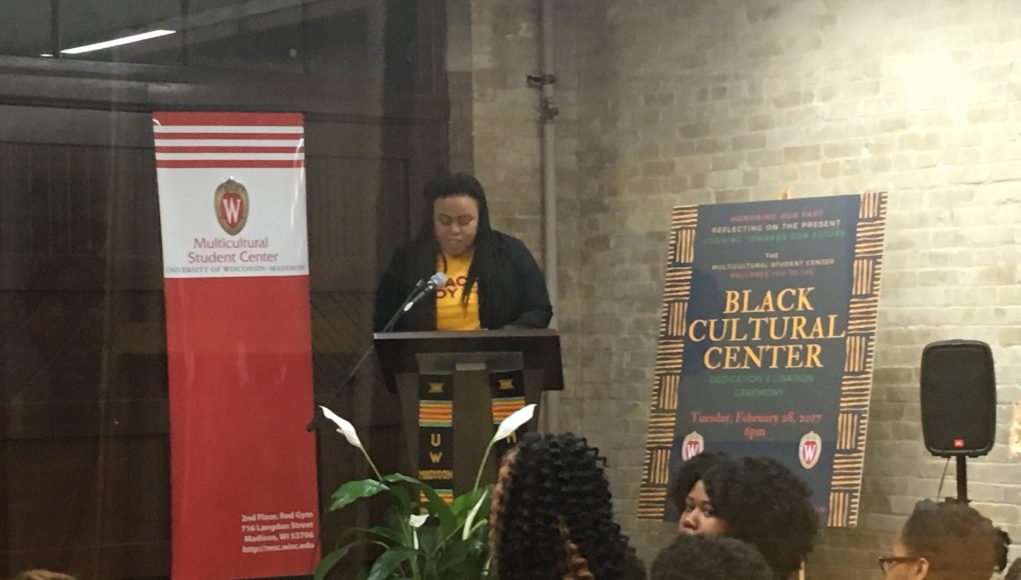On Tuesday, University of Wisconsin-Madison students and staff culminated Black History Month with a soft opening of the Black Cultural Center, located on the first floor of the historic Red Gym.
The opening, themed “Honoring Our Past, Reflecting on the Present, Looking Towards Our Future,” featured faculty, staff and student speakers all recognizing the role and history of Blackness on the campus.
The ceremony itself brought together generations of Black UW-Madison alumni who had been working hard to demand equity and create spaces for Black students on campus, like Dr. Hazel Symonette who opened the ceremony with a liberation ceremony to honor First Nation and African ancestry.
 Symonette was a member a group called the Black Alliance in 1969. The group was responsible for many campus protests that led to the creation of the original Black Cultural Center and the department of African American Studies, according to remarks by UW Professor Sandra Adele.
Symonette was a member a group called the Black Alliance in 1969. The group was responsible for many campus protests that led to the creation of the original Black Cultural Center and the department of African American Studies, according to remarks by UW Professor Sandra Adele.
“The past is present,” said Adele. “If it had not been for the brave young men and women who from 1968 through the fall of 1969 protested against this university’s administrators’ reluctance to institute culturally relevant programs and curriculum, we would not be here today. We are standing on their shoulders.”
Chancellor Rebecca Blank also spoke at the ceremony, naming a few historic Black figures in campus history such as William Smith Noland, the first African American to graduate in 1875 and Mabel Watson Raimey, the first African American woman to graduate in 1918.
“We wanted to make sure that this dedication ceremony and this space not only pays respect to our elders and those who came before us, but is and continually will be a space that centers the voices, experiences, and dynamic lives of Black students,” said Karla Foster, interim program coordinator for the Multicultural Student Center charged with convening the Black Cultural Center advisory board.
The center, which is about 70 percent completed, is intended to be a space where students can socialize, study, or take a break from the predominant whiteness of the university. It is also open as a space for students to organize.
“You got to know that University of Wisconsin-Madison became progressive because of protest of racial and political standards, so anyone who tells you to study instead of boycott does not respect the traditions of this university,” said Nia Scott, a student member of the center’s advisory board.
“Students individually and united within groups and organizations such as the Blind Side, the Wisconsin Black Student Union, the UW Blackout Movement, and the United Council of UW students, to name a few, have fought for this space,” said Foster
The center is expected to have its grand opening in May.




























